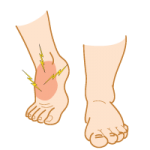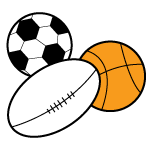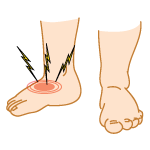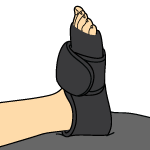What are Osteochondroses?
 Osteochondroses are a group of conditions that affect children and teens. Osteochondroses involve the break down of the structure of a joint (tissue, bone) that is caused by a lack of blood supply. While there are several Osteochondroses that affect the foot and ankle (such as Kohler’s Disease and Freiberg’s Disease), there are also others that affect the other joints in the body, such as the knee and the elbow.
Osteochondroses are a group of conditions that affect children and teens. Osteochondroses involve the break down of the structure of a joint (tissue, bone) that is caused by a lack of blood supply. While there are several Osteochondroses that affect the foot and ankle (such as Kohler’s Disease and Freiberg’s Disease), there are also others that affect the other joints in the body, such as the knee and the elbow.
While the term “Osteochondroses” refers to the conditions as a group, the singular term is “Osteochondrosis”.
Causes
While the exact cause of Osteochrondroses is unknown, medical professionals have speculated that the following factors may play a role:
- Growth spurts (since Osteochondroses seems to correlate with puberty, it is thought that rapid growth is a contributing factor)

- Physical activity (children and teens who experience Osteochondroses are more likely to be involved in sports)
- Genetics (some professionals believe that Osteochondroses may be hereditary)
- Repetitive strain or overuse of the joint (this is common in sports)
One explanation is that the bones are growing so rapidly, the blood supply to the joint becomes insufficient, leading to damage of the tissue and bone. This is especially likely if there has also been trauma in the affected area.
Signs & Symptoms
Signs and symptoms of Osteochondroses will vary depending on the specific type of Osteochondrosis. Generally, signs and symptoms will include:
- Pain in the affected joint
- Locking or popping sensation in the joint
- Foot or ankle has reduced range of motion
Treatment
 Most cases of Osteochondrosis will resolve on their own, without the need for treatment. However, there are always cases out there where the symptoms persist.
Most cases of Osteochondrosis will resolve on their own, without the need for treatment. However, there are always cases out there where the symptoms persist.
Resting – Avoiding any activities that may cause further damage to the affected area is a good idea. Sports should be put on hold for several weeks.
Cast – A cast may be required in order to help the child avoid bearing any weight on their foot or ankle, as this can cause more pain and further injury.
Cold & Compression – Cold and compression can be applied for 20 minutes at a time in order to relieve pain, swelling and inflammation.
Painkillers – While painkillers should not be taken during times of physical activity, they may help your child sleep if their sleep has been disrupted by the pain. NSAIDs (non-steroidal anti-inflammatory drugs) such as Advil and Aleve will work to relieve both pain and inflammation.